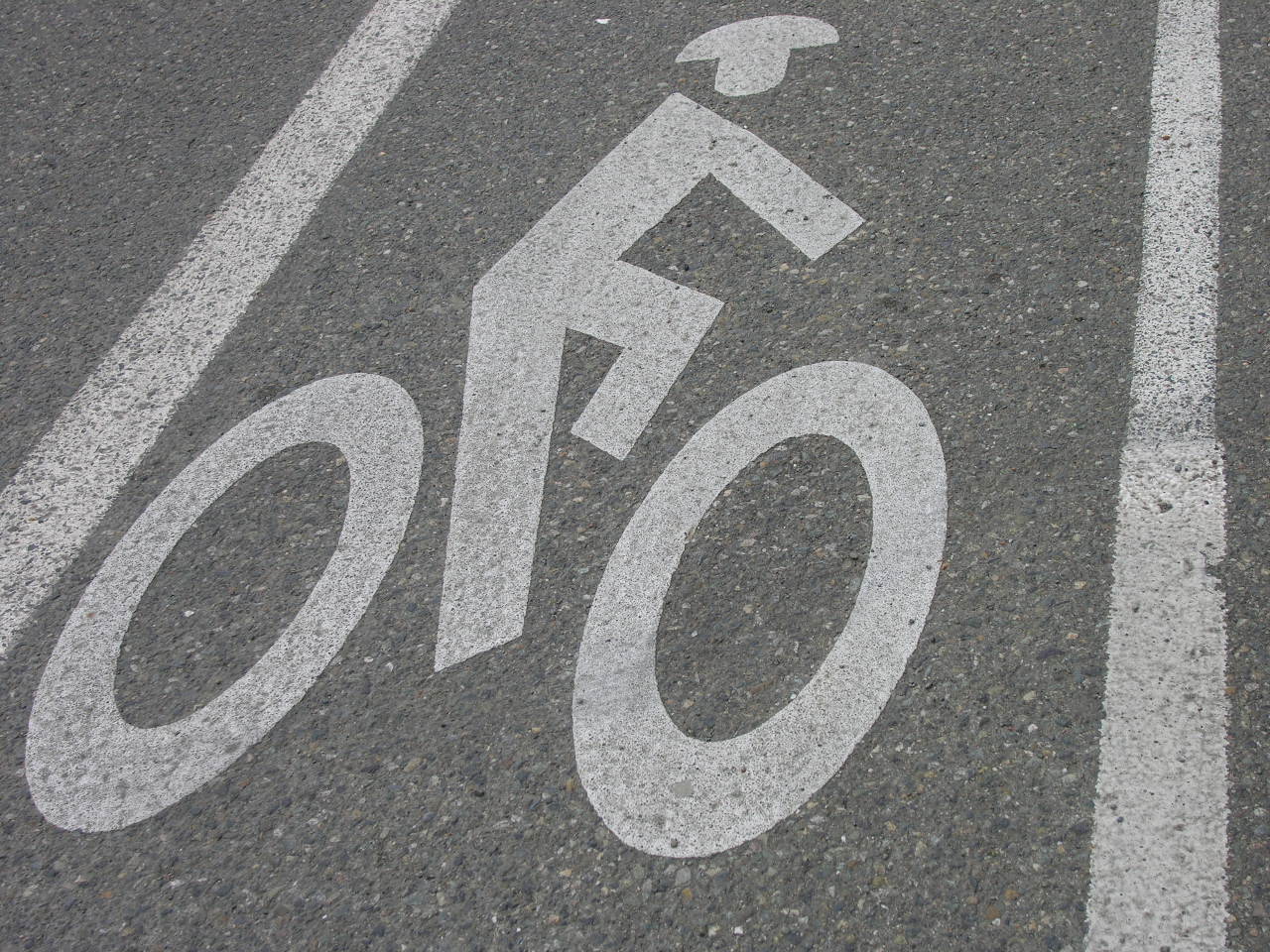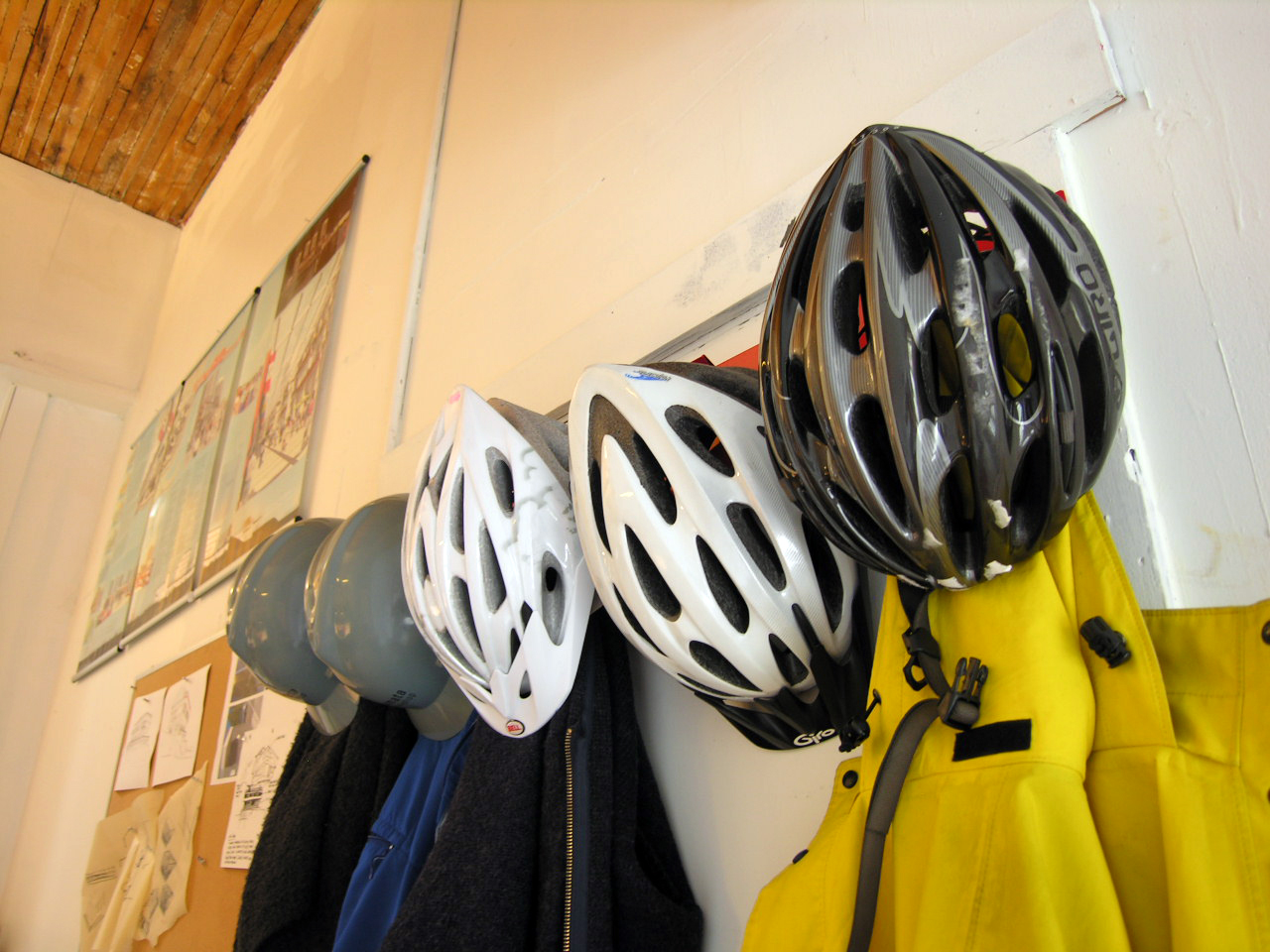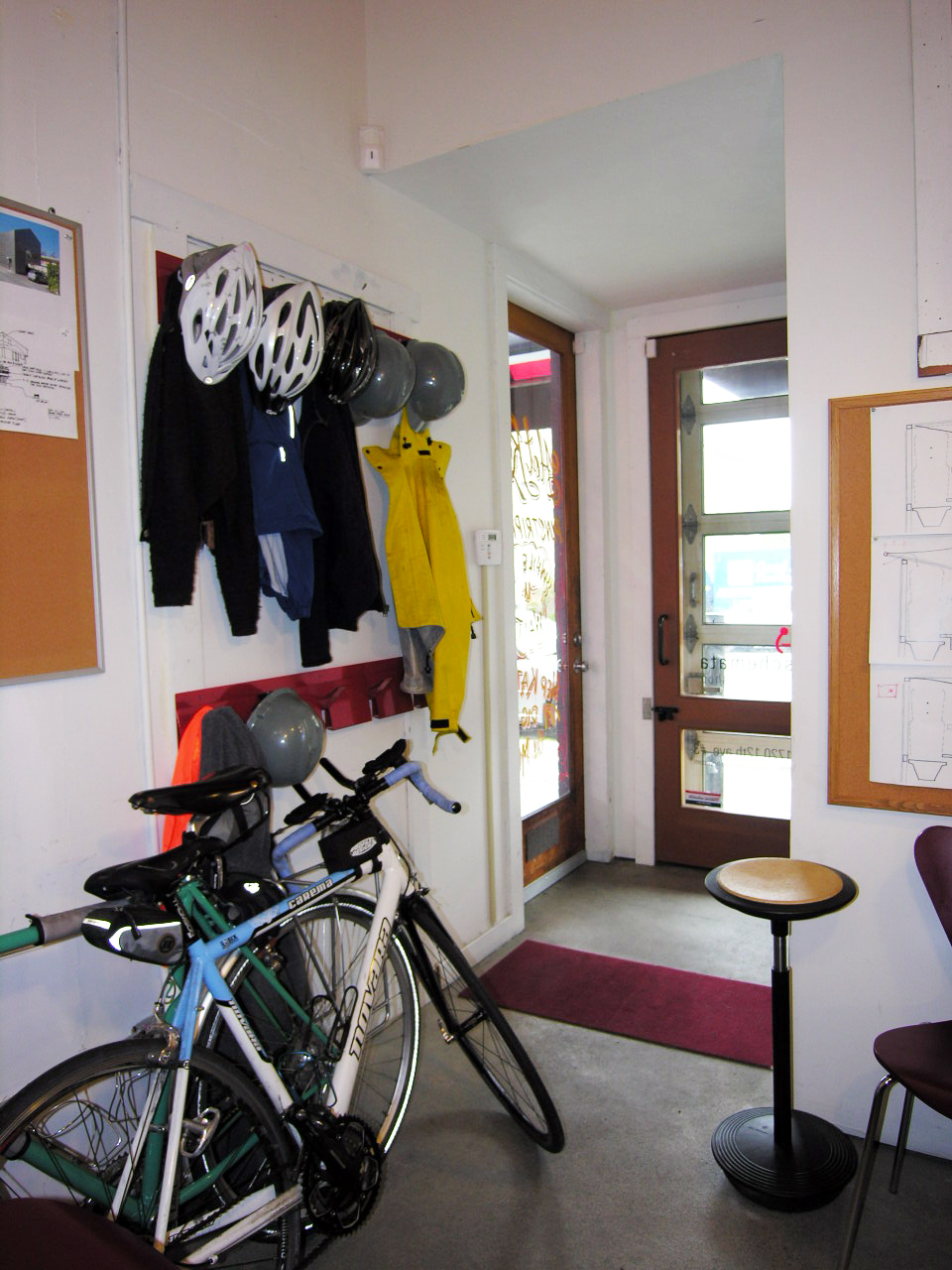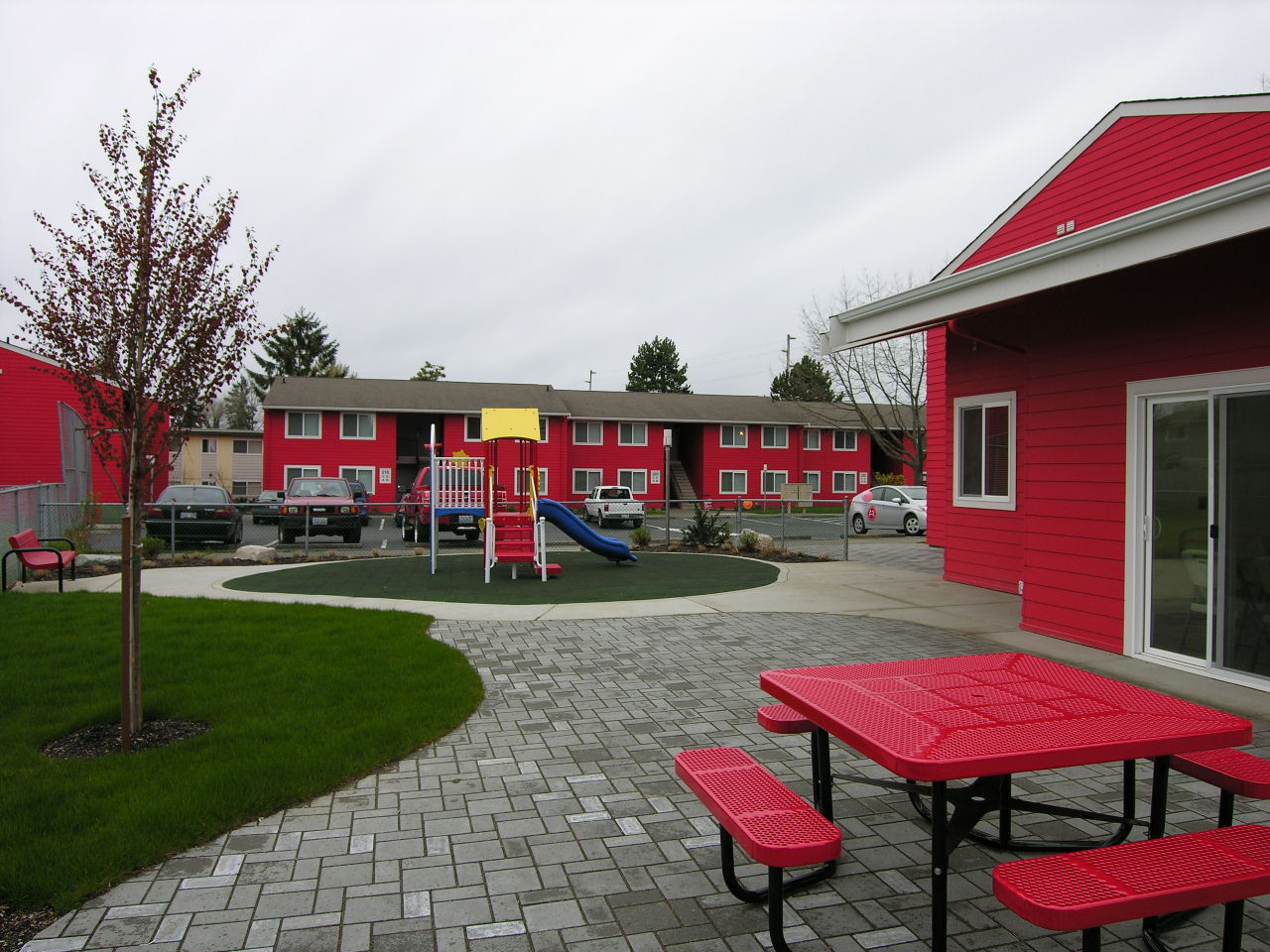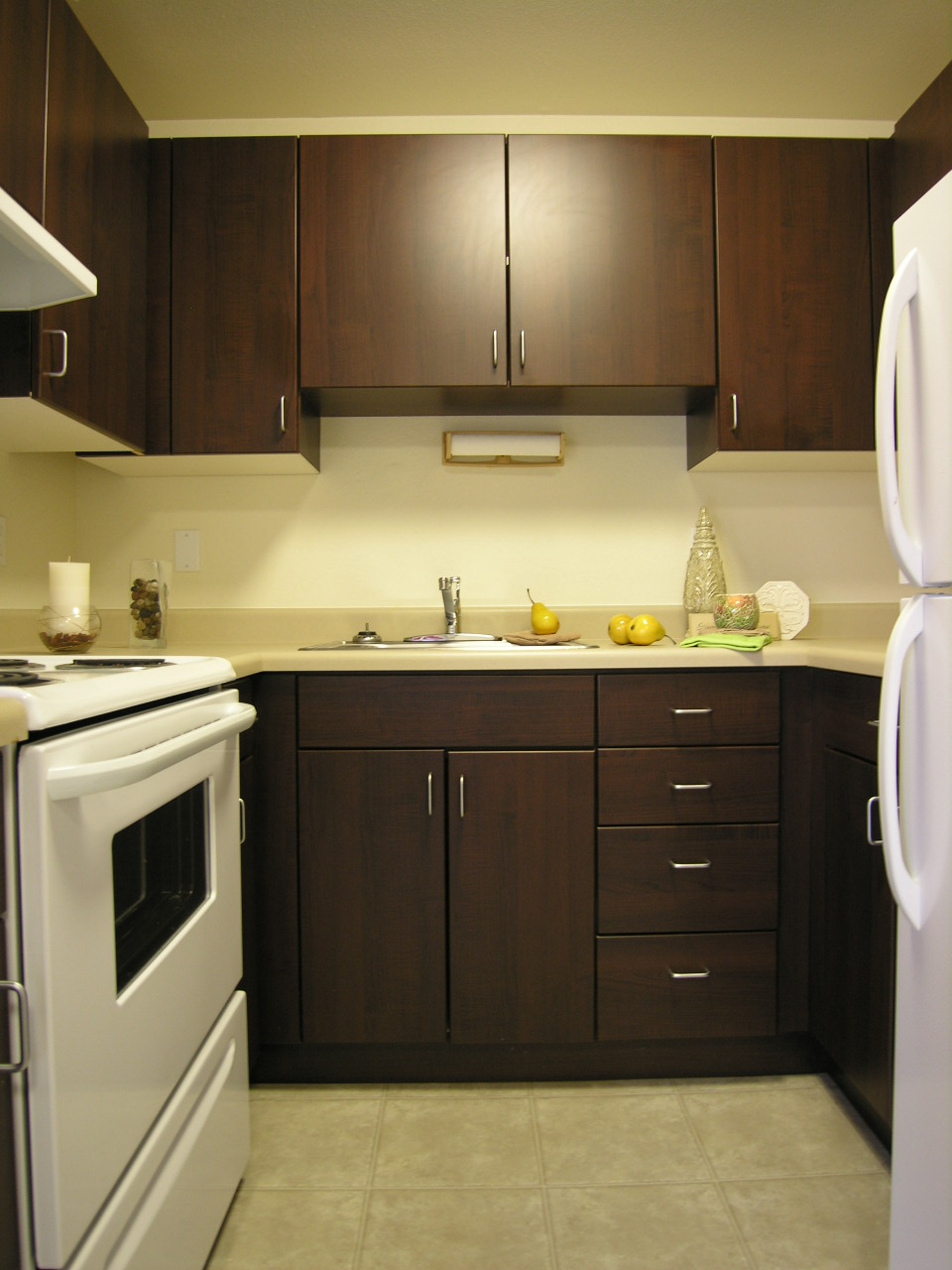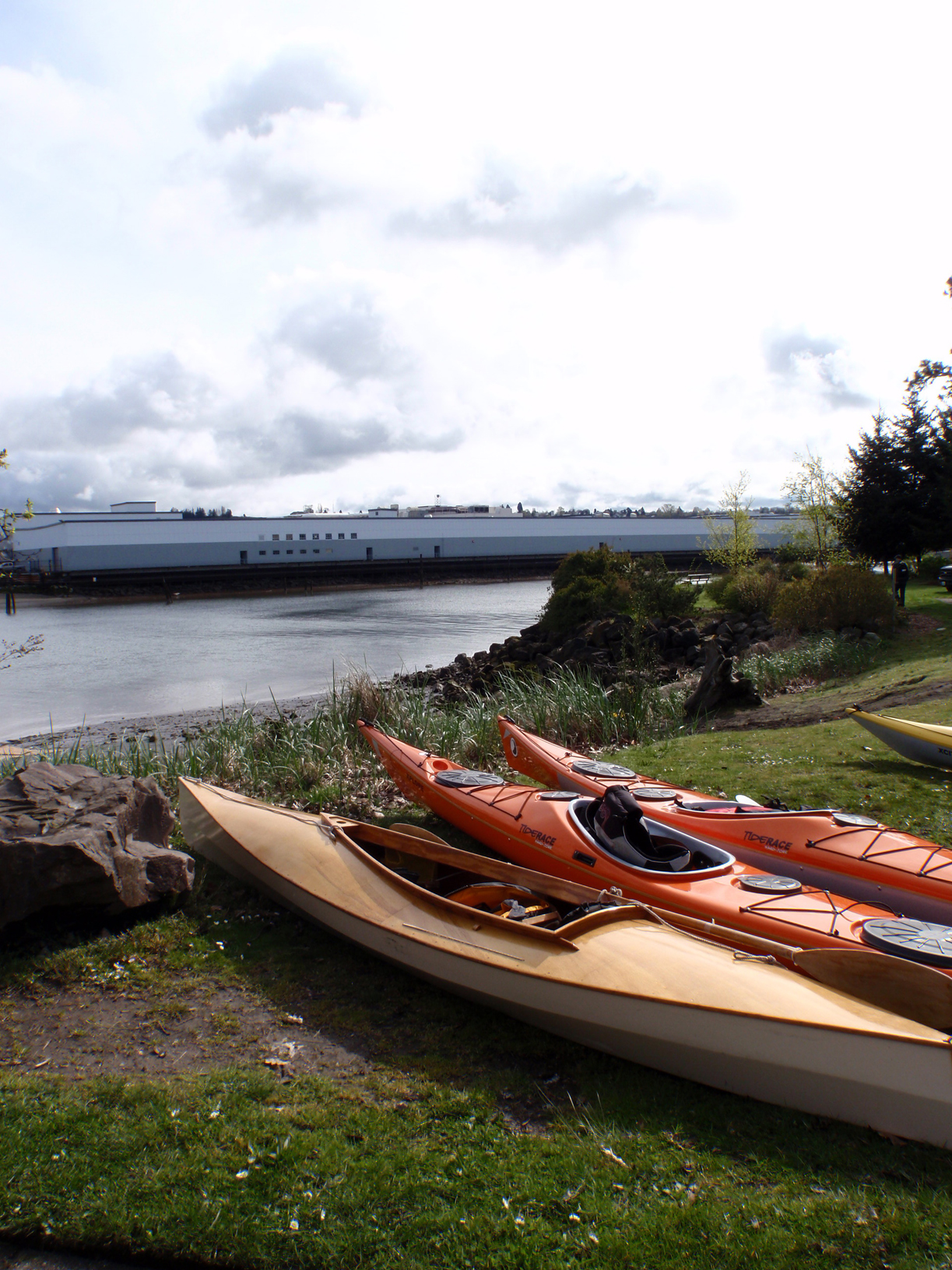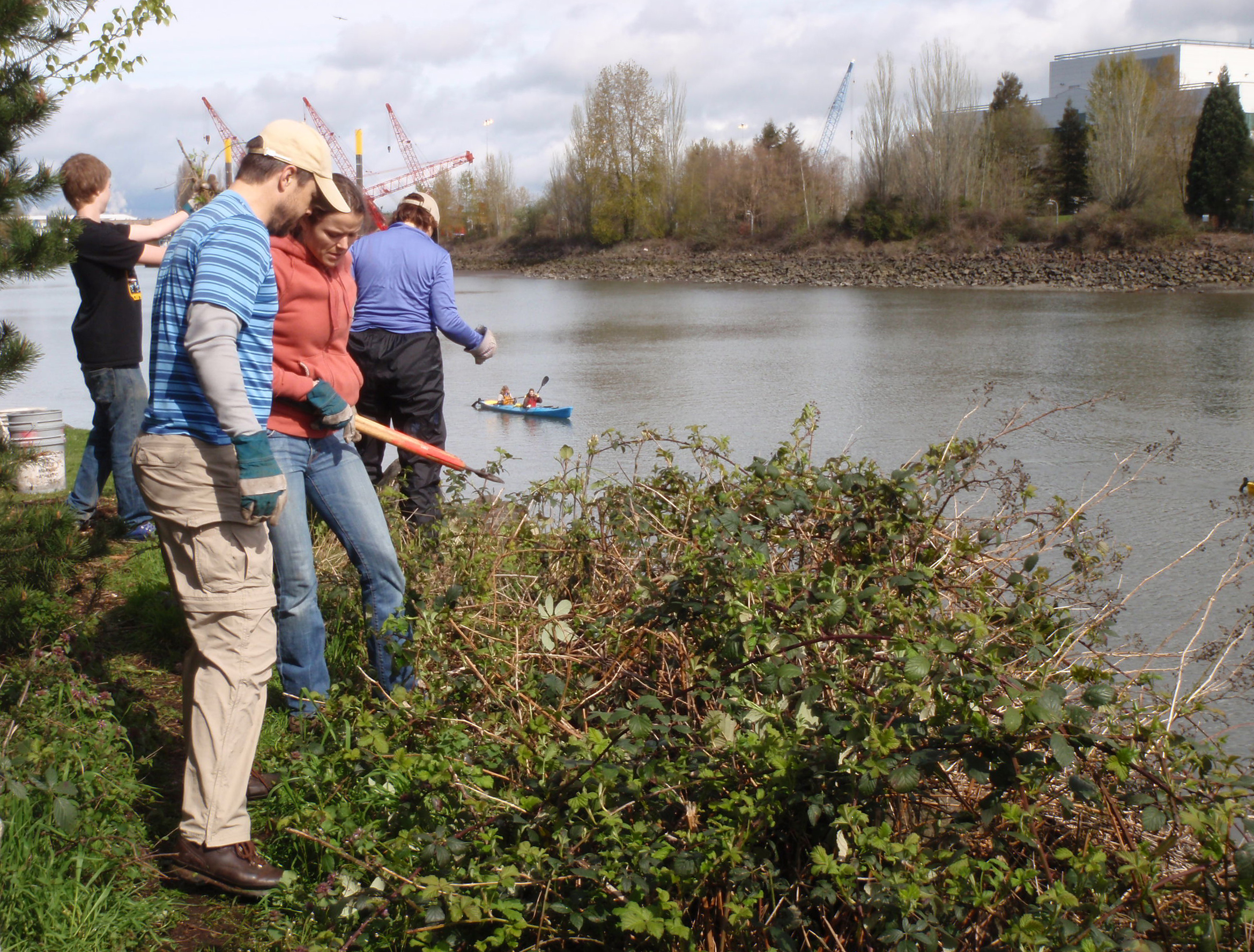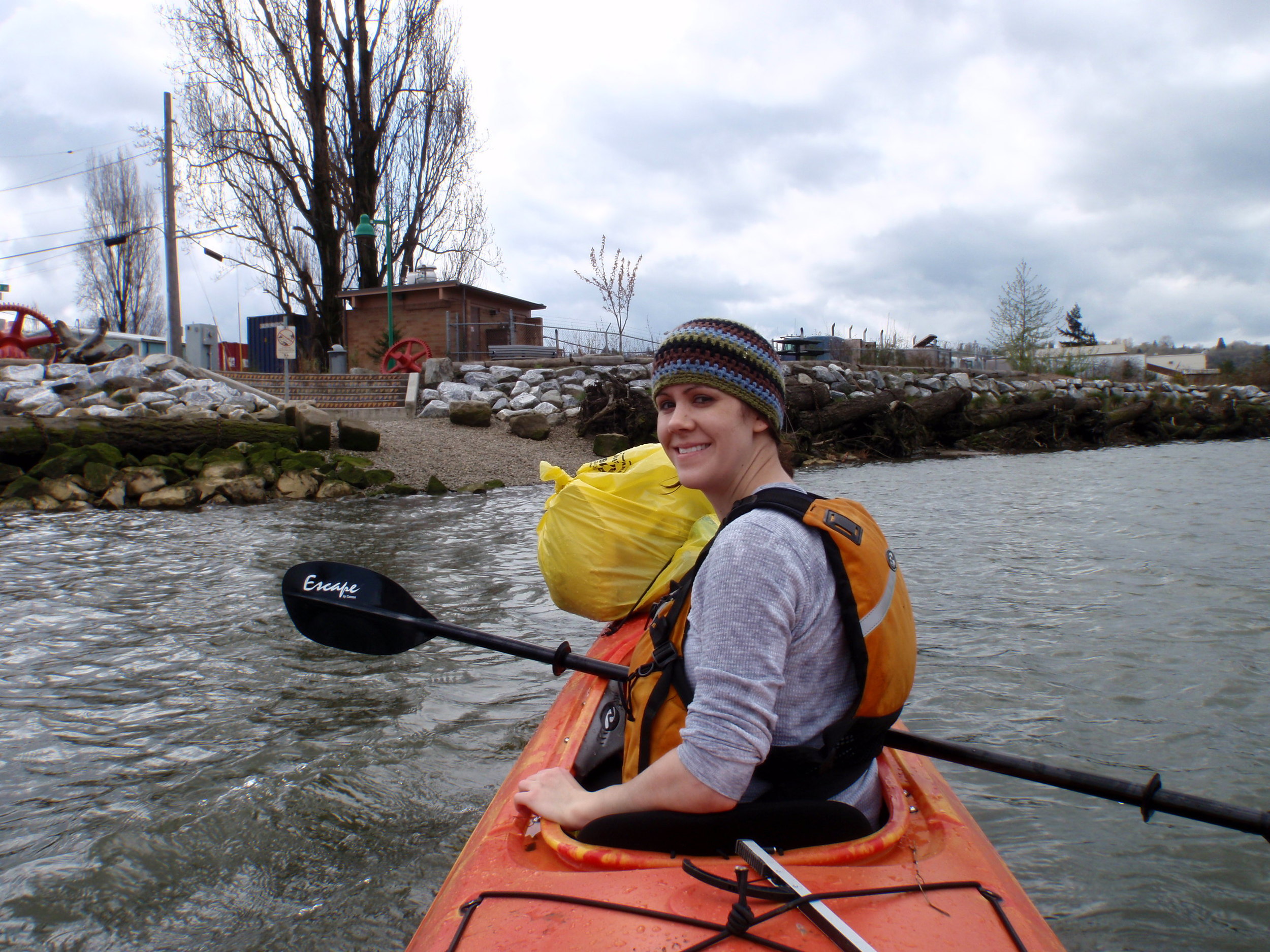[caption id="attachment_1882" align="aligncenter" width="700" caption="Rosie (Rhode Island Red), Buddha (Brahma), Butch (Americauna), Lemon (Buff Orpington). Not shown: Star (Silver Laced Wyandotte), Zebra (Cuckoo Maran)"]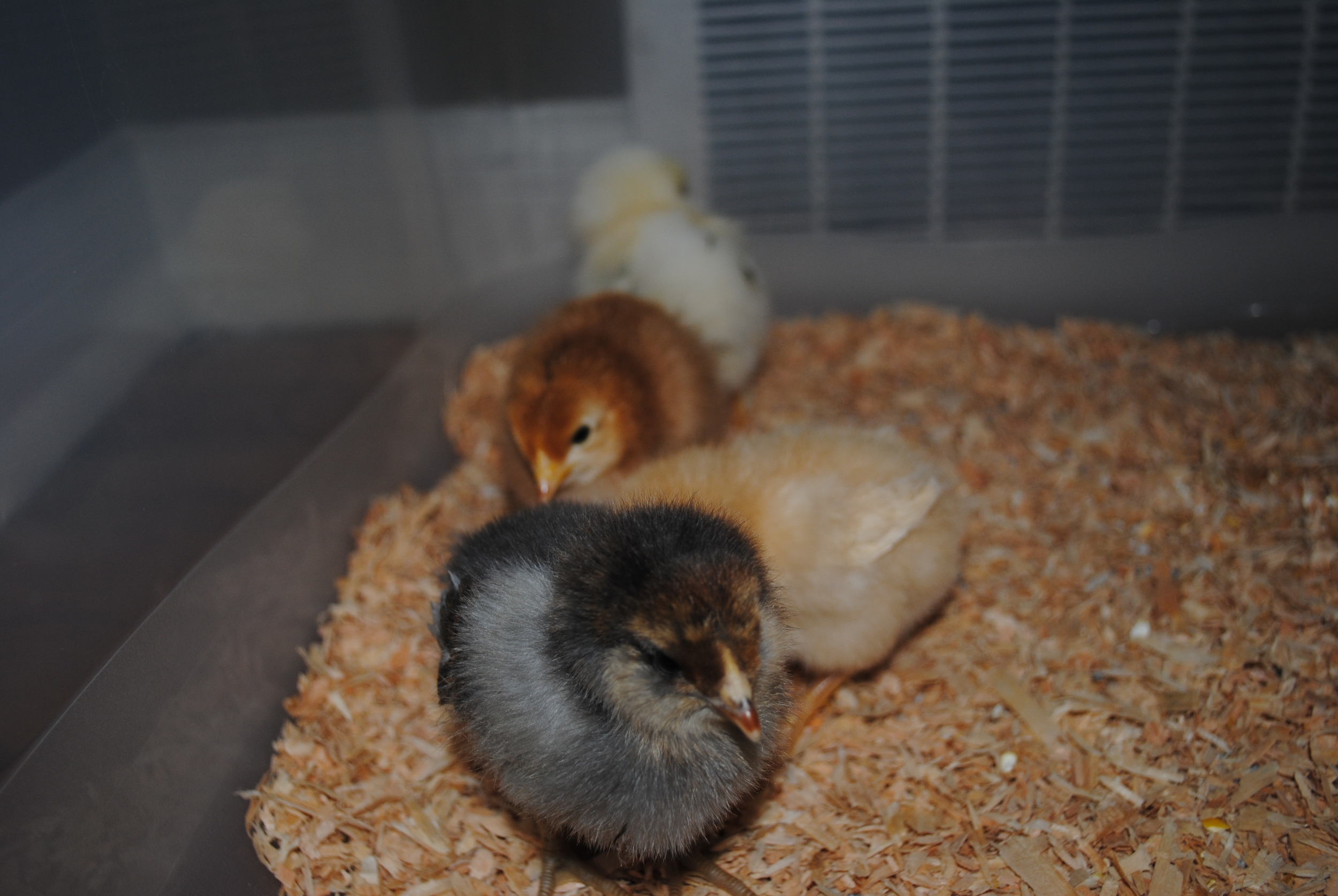 [/caption]
Two months ago my housemates and I felt inspired to take our desire for local sustainable food to the next level; we got four baby chickens. These four new household members took up lodging in our office in a new 94 quart plastic tote lined with some wood chips. Apparently baby chickens are not very picky about their housing and were happily chirping and scratching away within minutes of arriving.
[/caption]
Two months ago my housemates and I felt inspired to take our desire for local sustainable food to the next level; we got four baby chickens. These four new household members took up lodging in our office in a new 94 quart plastic tote lined with some wood chips. Apparently baby chickens are not very picky about their housing and were happily chirping and scratching away within minutes of arriving.
Four soft downy baby chickens huddled in a pile under a brooding lamp is just one of those irresistible sights. So irresistible, we quickly had two more baby chickens to add to the United Nations of Chickens. The city limit is eight chickens after all! One of my housemates, affectionately know as the chicken guru, can tell you the breed of each chicken but the rest of us know them as: Rosie, Buddha, Butch, Star, Zebra, and Lemon.
There were a lot of decisions to be made about how to raise our little girls even in the early stages. Do we give them the antibiotic feed recommended for little baby chicks? What kind of bedding should we use? Do we give our babies bird electrolytes? How warm do they need to stay? Will there really be dust everywhere? How do we keep them from getting their food clogged with shavings all the time? Should we really feed them eggs?
...........to read about how we answered these questions link to the full blog post on my gardening project Edible Dirt.
[caption id="attachment_1884" align="aligncenter" width="700" caption="The chickens got a temporary upgrade from their original plastic tote while we start to make plans for coop building."]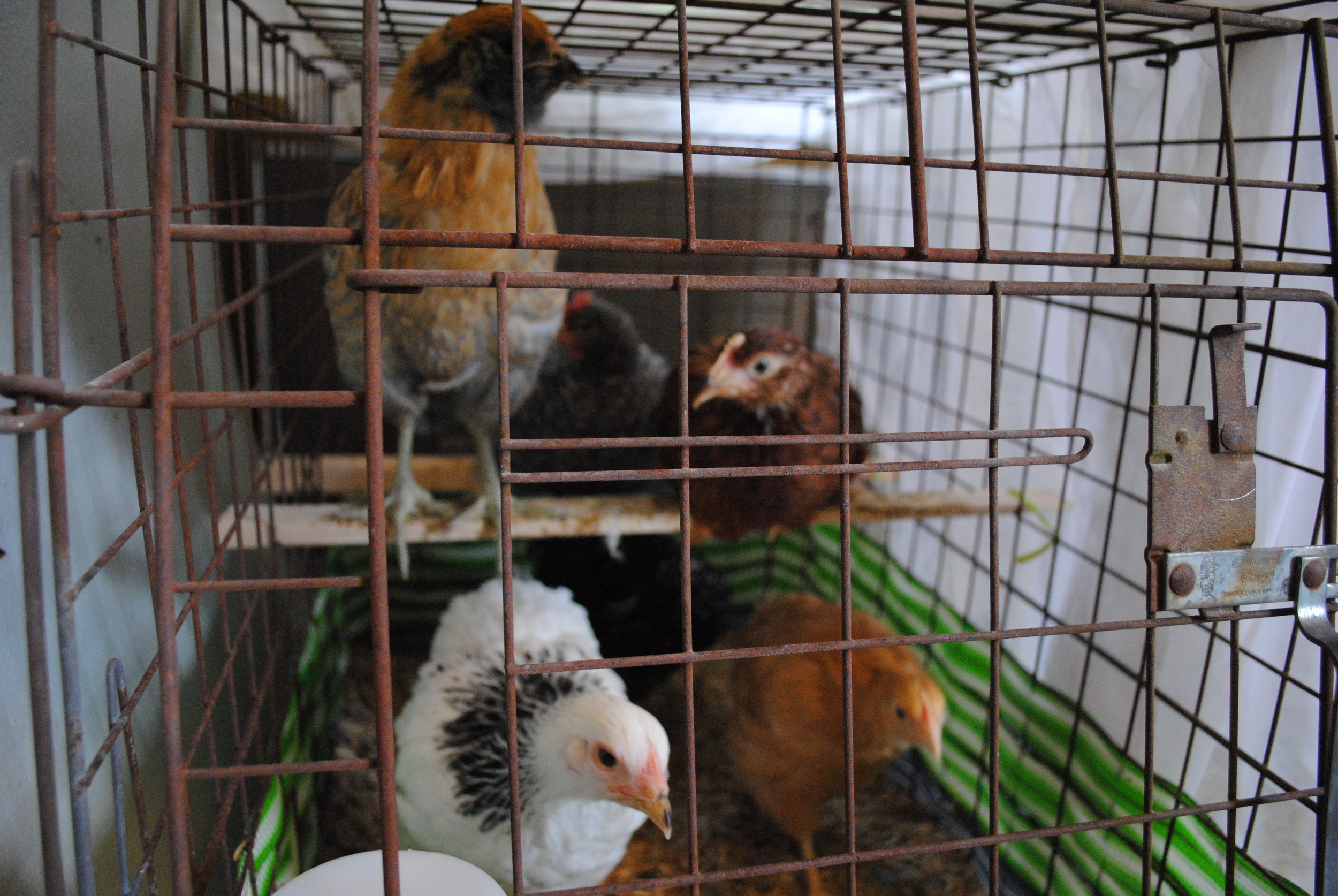 [/caption]
[/caption]

